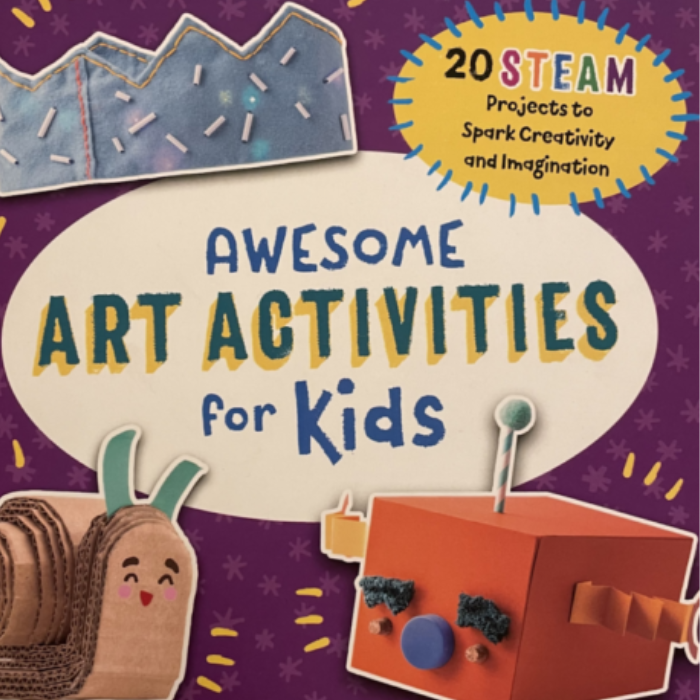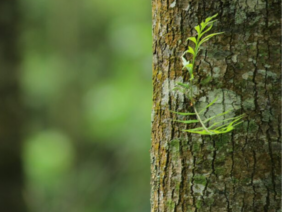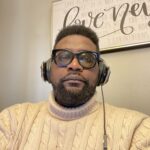
By: Kelechi Obasi

Lucy Song (she/they) is a multidisciplinary creative, parent, and author of “Awesome Art Activities for Kids: 20 STEAM Projects to Spark Creativity and Imagination”.
She is also a professor at Seneca College’s Faculty of Communication, Art & Design. Lucy is best known for sharing artful change-making early childhood resources at WithWonder.co, a website dedicated to inspiring young, curious, and creative minds.
Lucy is currently pursuing a Master’s degree in Inclusive Design at OCAD University in order to continue advocating for educational equity, diversity, and inclusion.
She spoke exclusively to the SerenityPlus just before her next international trip to travel and learn a new hobby.
SerenityPlus (SP): After many years of extended lockdowns from a killer virus pandemic, what is your take on the effects that this long-term isolation and lack of access to opportunities to create has had on children and their cognitive development?
Lucy Song (LS): I think it depends on the age group, to be honest. I think it affected children who are much older, like teens and young adults. I teach at Seneca College and I saw the deleterious effects of the isolation on the students, much more than I did with younger kids. I think, however, that it brought both positive and negative effects. There is this idea that creativity is strictly related to the arts and having that formal training. Yes, there is that aspect, but I think that there’s another part of it that opened up during the pandemic and that is really about problem-solving. The pandemic has pushed us, even forced us to be more creative, to think differently, and for us to work around things and I think that in itself is creativity. And this had impacted children and parents in a way that we cannot predict what the long-term effects are or will be.
SP: One of the many reasons that many parents give for their inability to encourage their children to take up art is the high cost of access to formal art training. From your experience, how can parents spark that creativity within their financial means?
LS: Just from my own experience as a professional creative and artist now, I did not have any formal arts training until I was in high school. I get this question a lot from parents, “Should I give my child formal training?”. And I always say, it depends on your child and their interests, because I find that artsy kids have a harder time focusing in more formal settings like sitting down for long periods in structured environments.
At that young age and especially if I look back at who I was as a child, I think it was more important that I was exposed to as many different types of art, like working with clay, or a paintbrush, to be given certain materials to figure out for myself if I like them and what interest I have in those media.
Coming from a lower-income family, my greatest memory is going to the library and picking out those art activity books and those craft books, and figuring out at home how I was going to approach them. I did not always have the right art supplies. My parents also role modelled what it is like to be very resourceful and that is another big reason for who I am today. We didn’t use glue sticks in those days because they were so expensive and so my parent would make sticky rice and we’d mush it down and that was my glue. Watching my parents do that made me think ‘I don’t need all the formal materials on a list and I could figure it out.’ And that is the strength in creativity. Role modelling truly helps to spark creativity.
SP: Talking about your parents who used role modelling as a tool to encourage your artistic expression, can you suggest other simple ways that parents can encourage that creative genius in their children?
LS: I would say being out in nature and exploration and going out camping. We did camping two to three times in the year as a family, going into the woods in a tent. I know a lot of parents don’t like doing that, but it’s so important as artists always connect with nature because there is always something to learn: it is free education. It teaches kids to be resilient, and you know continuing that love for nature and nurturing that resiliency and the training to adapt to spartan situations where you would have to make use of available resources around you. Go hiking on the weekend because these are moments of education that do not cost money.
SP: Tell us about your new book.
LS: My new book is Awesome Activity for Kids: 20 STEAM Projects to Spark Creativity and Imagination.
The best part about this book and what makes it stand out is that it encourages the use of recycled materials and that when you don’t have all the fancy supplies, you can use all the things around you. This is a book I wish that I had as a child because back then I didn’t value my skills as an artist as I should have. It was more a hobby than something that I should have taken more seriously.
Moreover, when I was always labeled the starving artist and was always told that I would never make a career out of art. It was always discouraging and hurtful to my confidence because it was the one skill I had but it had no place or value in the world.
Thankfully, I have changed as I got older. This book demonstrates that change in that visual art can be applied to any STEAM field, that there is a marriage of that, and that you do need art injected into STEAM to work in the new creative economy that is going to be coming up. You can even see it now with content creators being the new millionaires.
It showcases role models like polymaths, scientists, and artists and their stories of how they got to where they are today. It will help them to see things from a myriad of perspectives and how art can be found in Science, Technology, Engineering, and Math.
SP: Can children build a lucrative career in arts?
LS: Yes. There is. We are seeing robotics being married to art, we are seeing a lot of futuristic engineering dealing with advanced design. I think that every industry has space to inject a bit of art into it.
SP: How can art and creativity help with stress management?
LS: To a lot of artists, art becomes almost meditative. It is such a tactile experience and I think that especially those who are neurodivergent gravitate towards the art and I want to study that a bit more. There is a flow that is accessed through this meditative art that artists go through. I think it is so important for everyone to be able to have that, not as an escape, but as a way to settle their minds. We all do that in very different ways whether it is a breathing exercise, meditation, a sensory engagement through dance, or picking up paint and colours. That is how we are built to learn, to engage all the five senses. Artists have different engagements that make them look like they are different.



